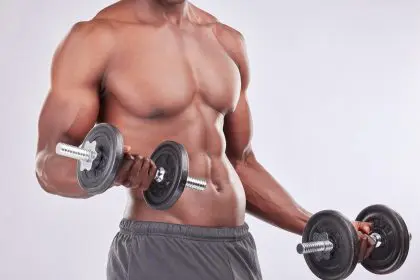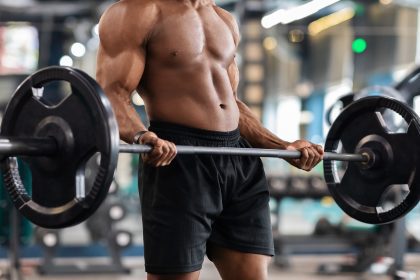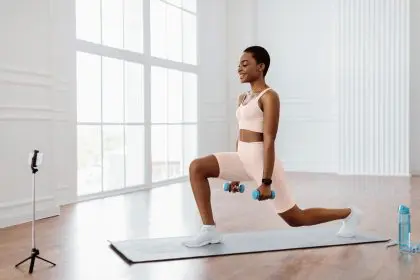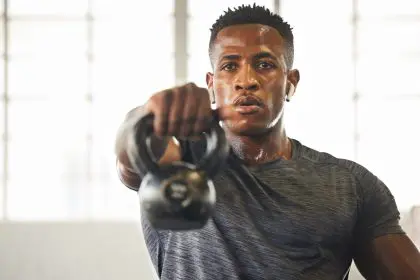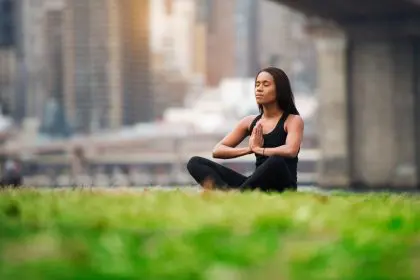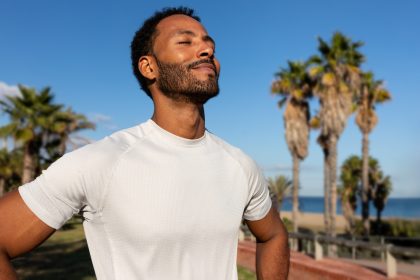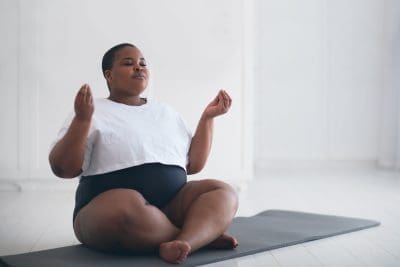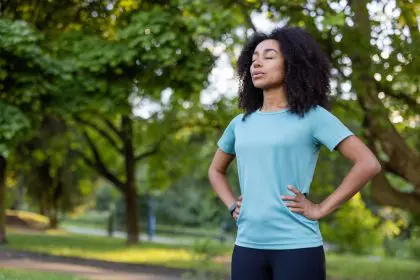Weekend warriors across America are discovering a powerful secret weapon against anxiety that doesn’t require expensive therapy sessions or daily medication. These targeted workout routines transform ordinary weekends into anxiety-crushing powerhouses that deliver lasting mental health benefits throughout the entire week.
The connection between physical movement and mental wellness has never been more critical as anxiety rates continue climbing nationwide. Millions of Americans struggle with persistent worry, stress and overwhelming feelings that interfere with daily life. The weekend warrior approach offers a practical solution for busy people who can’t commit to daily exercise but need effective anxiety relief.
These four specific workout strategies have emerged as particularly effective for combating anxiety symptoms while fitting into packed weekend schedules. Each routine targets different aspects of anxiety relief through carefully designed movement patterns that trigger the body’s natural stress-fighting mechanisms.
High-intensity interval training melts anxiety away
High-intensity interval training represents one of the most powerful weapons against anxiety available to weekend warriors. This workout style alternates between intense bursts of activity and brief recovery periods, creating a perfect storm of anxiety-fighting benefits that extend far beyond the gym.
The first workout combines 30-second sprints with 90-second walking recovery periods, repeated for 20 minutes total. This pattern triggers massive releases of endorphins while simultaneously teaching the nervous system to handle stress more effectively. The intensity creates a controlled stress environment that helps desensitize the body to anxiety-provoking situations.
HIIT workouts force rapid breathing patterns that naturally regulate the nervous system. During intense intervals, the body learns to maintain function under pressure, while recovery periods practice the relaxation response. This training effect carries over into daily life, making individuals more resilient when facing anxiety triggers.
The metabolic benefits of HIIT extend the anxiety-fighting effects for hours after exercise completion. Elevated metabolism and improved insulin sensitivity create stable blood sugar levels that prevent the energy crashes often associated with anxiety spikes. This biochemical stability provides a foundation for sustained mental wellness.
Strength training builds mental resilience
Strength training offers unique anxiety-fighting benefits that complement cardiovascular exercise perfectly. The second weekend warrior workout focuses on compound movements that engage multiple muscle groups while building both physical and mental strength through progressive overload principles.
The routine centers around four key exercises performed in circuit fashion. Squats, deadlifts, push-ups and rows create a full-body workout that can be completed in 45 minutes including warm-up and cool-down periods. Each exercise is performed for 3 sets of 8-12 repetitions with 2-minute rest periods between sets.
Progressive overload in strength training creates measurable improvements that boost confidence and self-efficacy. Successfully completing challenging workouts provides concrete evidence of personal capability, directly countering the helplessness feelings that often accompany anxiety disorders. Each workout becomes a victory that builds mental resilience.
The focus required during strength training creates a meditative state that interrupts anxious thought patterns. Concentrating on proper form, breathing patterns and rep counting forces the mind away from worry cycles and into the present moment. This mindfulness effect provides immediate anxiety relief during workouts.
Yoga flow sequences calm the nervous system
The third workout combines traditional yoga poses with dynamic flow sequences designed specifically for anxiety relief. This 60-minute routine targets the parasympathetic nervous system while building functional strength and flexibility that supports overall wellness.
The sequence begins with gentle warm-up movements including cat-cow stretches and child’s pose to activate the relaxation response. Sun salutations provide moderate cardiovascular challenge while maintaining focus on breath coordination. The combination of movement and breathing creates immediate calming effects on the nervous system.
Standing poses like warrior sequences build strength while promoting grounding sensations that counter anxiety’s tendency to create feelings of instability. Balance challenges in tree pose and dancer’s pose require present-moment awareness that interrupts worry patterns while building confidence in body control.
The session concludes with restorative poses including supported child’s pose, legs-up-the-wall position and extended savasana. These positions activate the parasympathetic nervous system while allowing integration of the workout’s benefits. The contrast between active and restorative elements teaches the body to transition between states effectively.
Dance cardio releases emotional tension
The fourth workout harnesses the power of rhythmic movement and music to create joy while simultaneously crushing anxiety. This 45-minute dance cardio session combines popular music with simple choreography that anyone can follow regardless of dance experience or skill level.
The routine begins with gentle warm-up movements that gradually increase in intensity and complexity. Basic steps like marching, side steps and arm circles prepare the body while allowing participants to connect with the music. The progression from simple to complex movements builds confidence while preventing intimidation.
High-energy dance sequences incorporating jumping, twisting and full-body movements create intense cardiovascular challenge while promoting emotional release. The combination of music, movement and rhythm triggers powerful endorphin releases that provide immediate mood elevation and anxiety relief.
The social aspect of dance, even when performed alone, creates feelings of connection and joy that directly counter anxiety’s isolating effects. Dancing to favorite songs creates positive associations that can be recalled later during anxious moments, providing instant access to improved emotional states.
Scientific mechanisms behind anxiety relief
The physiological processes triggered by weekend warrior workouts create multiple pathways for anxiety reduction that work synergistically to provide comprehensive mental health benefits. Understanding these mechanisms helps optimize workout choices and timing for maximum anxiety-fighting effectiveness.
Exercise triggers the release of endorphins, often called the body’s natural painkillers, which create feelings of euphoria and well-being that directly counteract anxiety symptoms. These neurochemicals remain elevated for hours after exercise completion, providing extended periods of improved mood and reduced worry.
Physical activity also increases production of brain-derived neurotrophic factor, a protein that supports the growth and maintenance of neurons involved in learning and memory. Higher BDNF levels are associated with improved stress resilience and reduced anxiety sensitivity, creating long-term mental health benefits.
The temperature regulation required during exercise activates similar brain regions used in emotional regulation. This cross-training effect strengthens the brain’s ability to manage difficult emotions, including anxiety, fear and overwhelm. Regular weekend workouts literally rewire the brain for better emotional control.
Timing strategies maximize anxiety benefits
The timing of weekend warrior workouts significantly impacts their anxiety-fighting effectiveness. Morning workouts provide all-day anxiety protection by establishing positive neurochemical patterns early in the day. The endorphin release from morning exercise creates resilience against afternoon and evening anxiety triggers.
Saturday morning workouts set a positive tone for the entire weekend while providing stress relief from the previous week’s accumulated tensions. The psychological benefits of starting the weekend with accomplished fitness goals create momentum that carries through other weekend activities and into the following week.
Sunday afternoon workouts help process weekend stress while preparing mentally for the upcoming week. This timing allows for emotional processing of weekend events while building confidence for Monday’s challenges. The routine creates a bridge between weekend relaxation and weekday responsibilities.
Split routines across both weekend days maximize the anxiety-fighting benefits while preventing overexertion. Alternating between high-intensity and restorative workouts provides comprehensive stress management while maintaining sustainable exercise habits that support long-term mental health.
Equipment and space requirements
Weekend warrior anxiety workouts can be adapted to virtually any space or equipment situation, making them accessible regardless of gym membership or home setup. Bodyweight exercises provide complete workouts without requiring any equipment while maintaining effectiveness for anxiety relief.
Home workouts using minimal equipment like resistance bands, dumbbells or kettlebells expand exercise options while maintaining convenience and cost-effectiveness. These tools enable progressive overload in strength training while supporting various cardio and flexibility routines.
Outdoor workouts in parks, trails or neighborhood streets provide additional benefits through nature exposure and fresh air. The combination of exercise and natural environments creates synergistic anxiety-fighting effects that exceed indoor workout benefits. Weather permitting, outdoor weekend warrior sessions provide optimal mental health benefits.
Gym access expands exercise options but isn’t necessary for effective anxiety management through weekend warrior workouts. The key lies in consistency and intensity rather than equipment sophistication or facility amenities.
Progressive workout development
Beginning weekend warriors should start with modified versions of these workouts to prevent injury while building fitness foundations. Initial sessions might include shorter durations, lower intensities or simplified movements that can be progressed over time as fitness improves.
The first month focuses on establishing workout habits and learning proper movement patterns. Emphasis should be placed on consistency rather than intensity, with anxiety relief benefits appearing even at moderate effort levels. Building the weekend workout habit creates the foundation for long-term anxiety management.
Month two introduces increased intensity, longer durations or more complex movements as fitness improves. The progressive overload principle applies to anxiety-fighting workouts just as it does to traditional fitness training, with gradual increases in challenge producing continued mental health improvements.
Advanced weekend warriors can combine multiple workout styles within single sessions or across weekend days. The variety prevents boredom while targeting different aspects of anxiety relief through diverse movement patterns and intensities.
Long-term anxiety management strategies
Weekend warrior workouts provide immediate anxiety relief but also contribute to long-term mental health improvements when performed consistently over time. The cumulative effects of regular exercise create structural brain changes that enhance stress resilience and emotional regulation capabilities.
Tracking anxiety levels before and after workouts helps identify which routines provide the most benefit for individual needs. This personalization allows for workout optimization based on specific anxiety triggers and symptoms, maximizing the mental health return on exercise investment.
Combining weekend warrior workouts with other anxiety management strategies like proper sleep, nutrition and stress management creates comprehensive approaches to mental wellness. Exercise serves as the foundation that supports and enhances other anxiety-fighting interventions.
The social aspects of weekend warrior workouts can be enhanced through group classes, workout partners or online communities that provide additional support and accountability. The combination of exercise benefits and social connection creates powerful anxiety-fighting synergies.


